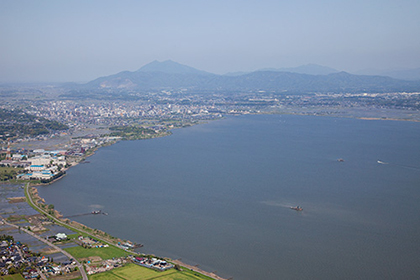Introduction
In 1976, 2 years after the establishment of the National Institute for Environmental Studies (NIES), a monitoring project was initiated by NIES in Lake Kasumigaura. The aim of the project was to comprehensively study water pollution and eutrophication in Lake Kasumigaura. Water quality of the lake and its biological aspects have been monitored ever since.

The long-term monitoring project in Lake Kasumigaura has played an important role in both domestic and international monitoring networks. In 1996, Lake Kasumigaura was designated as a trend station in the Global Environmental Monitoring Systems (GEMS) Water Project, run by the United Nations to provide the international network for monitoring data on fresh water quality. Furthermore, Lake Kasumigaura is registered as a core site in the Japan Long-Term Ecological Research Network (JaLTER), which is a formal member of the International LTER Network (ILTER).
Since 2011, the Biodiversity Division has been the head office for the monitoring project in Lake Kasumigaura, which was transferred from the Earth System Division (CGER). The long term monitoring has been implemented by Biodiversity Division in collaboration with the Regional Environment Conservation Division.
Currently, we carry out two different types of regular investigation: monthly comprehensive monitoring at 10 sampling sites and bimonthly fish monitoring at 1 sampling site. We have accumulated and published the monitoring data in this database. Various lake studies have been implemented such as development of more effective monitoring tools, assessment of long-term trends in water quality and biological communities, and identification of the drivers of those trends. We also actively engage in science outreach activities.
In 2016, we are pleased to announce that our project has been continued for 40 years. All accumulated monitoring data of Lake Kasumigaura has been provided in this database. We have plans to further expand the database in the future. We hope that our long-term monitoring data is used in ways that bring contributions to the conservation of water environments and ecosystems of Lake Kasumigaura and provide aids for studies on conservation and management of lake ecosystems.
*1 Data collection, *2 Database management and maintenance